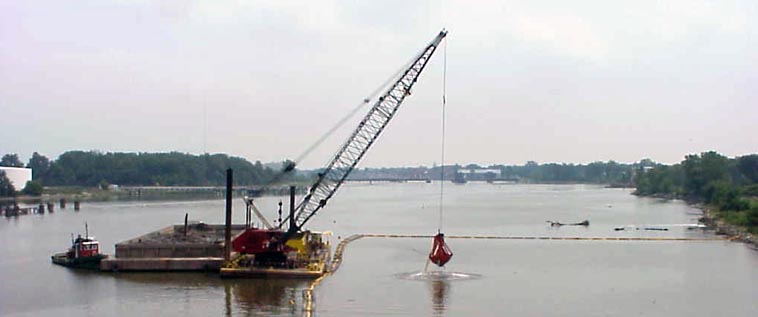Introduction
While certain persistent toxic substances (PTS) have
been significantly reduced in the Great Lakes Basin Ecosystem over the past
30 years, they continue to be present at levels that pose threats to human
and wildlife health, warrant fish consumption advisories in all five lakes,
and disrupt a way of life for many in the basin, particularly the life ways
and culture of tribal communities. The GLRC Strategy calls for the continued
reduction and virtual elimination of persistent toxic substances such as
mercury in the basin.
In 2006, the GLRC began a Toxic Pollutants Initiative
that set forth a series of near term activities undertaken by members of the
Collaboration to implement these recommendations, including the development
of a strategy for reducing mercury in products. This new initiative will
build on those activities and, expanding on a pilot Michigan program,
develop a regional strategy for reducing mercury emissions across the Great
Lakes region.
Proposed Activities
Create region-wide strategy to reduce mercury
emissions
A Great Lakes mercury emission reduction strategy would be developed in
a manner similar to the Great Lakes mercury in products phase-down
strategy. This effort should produce institutionalized activities to
sustain mercury emissions reduction from new and existing sources whose
mercury emissions have not been regulated, and from sources where
regulations have been implemented but additional reductions are technically
feasible and economically reasonable. Examples of potential sources include
manufacturing processes that produce mercury emissions, and the disposal of
mercury-containing products.
The strategy would be drafted
by a group that includes staff from each of the Great Lakes states, U.S.
Environmental Protection Agency, and interested tribes and cities. This
group would solicit input from stakeholders on an ongoing basis using the
existing Great Lakes Binational Toxics Strategy mercury workgroup.
The strategy should acknowledge
existing work within the region among various agencies and organizations
(states, municipalities, tribes, universities, etc.). Where consensus
exists among the group, the strategy should include specific recommendations
for action by appropriate levels of government and the stakeholder
community, whether through legislation, regulation, permits, or voluntary
approaches. Where consensus is not possible, it should list the available
options for reducing emissions from a sector. The strategy should also
include a reference table and summary of existing and planned actions to
reduce mercury emissions.
Proposed Schedule
The schedule for developing a
mercury emission reduction strategy would include:
- Initial teleconference to discuss mission
and goals. (October 2007).
- Conference call with Binational Toxics
Strategy mercury workgroup to discuss workplan and opportunities for
input. (November 2007).
- Draft an evaluation of the major sources
of mercury deposition in the Great Lakes region and a list of priority
sectors to include in the strategy, based on amount of emissions within
the Great Lakes states and current availability of measures to achieve
reductions. Also identify sectors for future work (February 2008).
- Distribute for technical and limited
public review through Binational Toxics Strategy mercury workgroup.
(March 2008).
- Develop draft Strategy, including
recommended actions (May 2008).
- Distribute for technical and limited
public review through the Binational Toxics Strategy mercury workgroup
(May 2008).
- Revise draft Strategy (August 2008).
- Release draft Strategy for general public
comment (August-October 2008).
- Revise draft Strategy based on public
comments (October-December 2008).
- Complete GLRC membership review of final
Strategy (January 2009).
- Release final draft and begin
implementation of recommendations (March 2009).
| 

